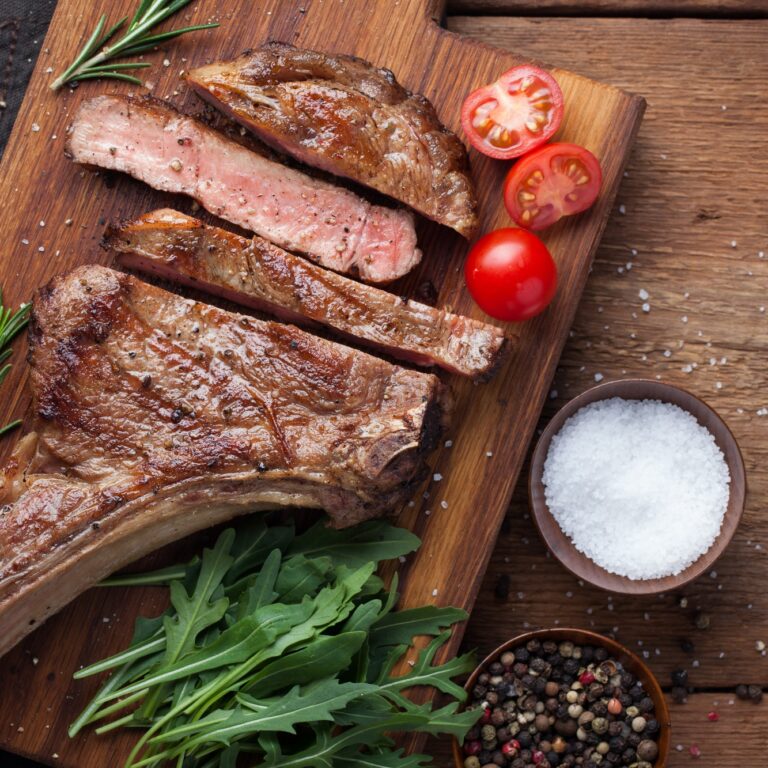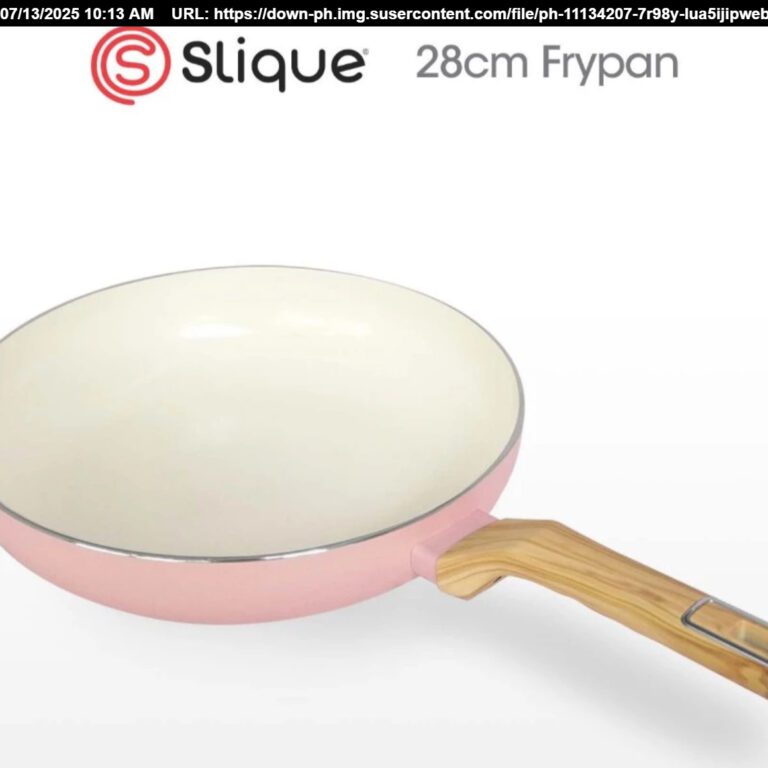
DIY Binondo Food Tour -Exploring the Historical and Culinary Wonders of Binondo
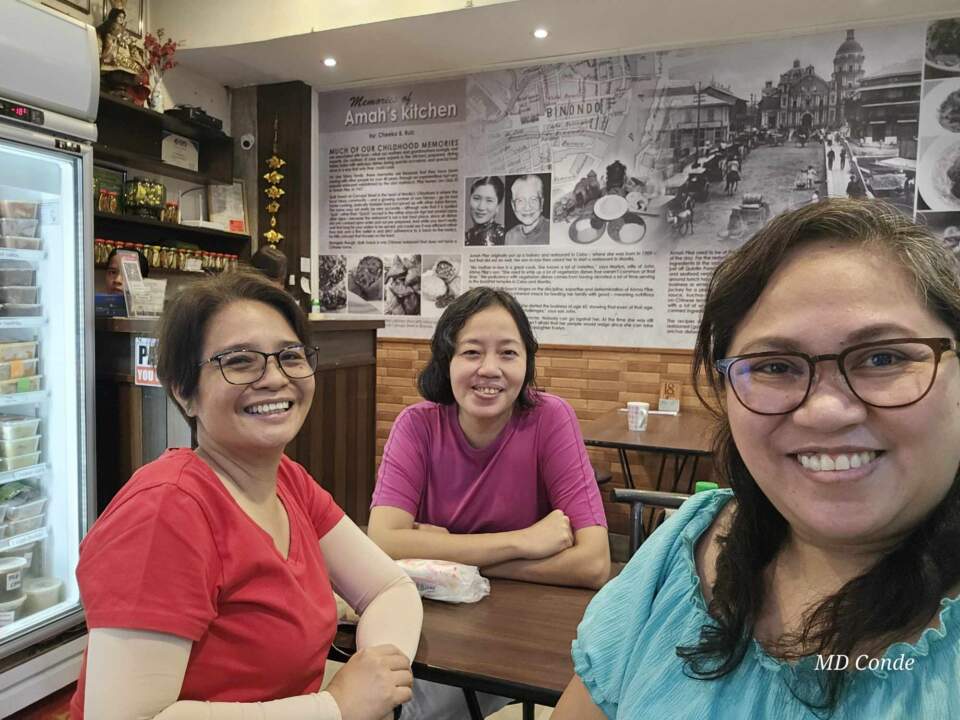
Hello friends and fellow foodies! It’s your gal April from RelaxLangMom.com here to share an amazing adventure I recently had -a DIY Binondo Food Tour exploring the historic and delicious neighborhood of Binondo in Manila.
If you’re a homeschooling mom looking for an activity for the kids or simply itching to swap your spatula for a pair of chopsticks and dive into a world where the streets are paved with dumplings, welcome to your guide to mastering a Binondo food tour. Binondo, Manila’s Chinatown, is not just a place—it’s a food adventure waiting to happen, bursting with flavors, colors, and history.
But, like any epic quest, it comes with its dragons to slay (read: crowds and narrow streets) and treasures to find (hello, best lumpia in town!). Let’s embark on this gastronomic journey together, where I’ll arm you with tips, tricks, and reminders to make your Binondo food trip as smooth as a freshly steamed rice cake
My girlfriends from UP Los Banos were wanting to explore Binondo for the Binondo food tour experience for so long and one weekend, we just decided to go. You know, the usual, “biglaang lakad, natutuloy” thing. And I decided to dive deep into the cuisine and culture of Binondo. Let me tell you – it was pure foodgasm from start to delicious finish! Our guide, Dra Mara, a doctor friend from the nearby Manila Hospital, walked us through the alleys with stories as rich as the neighborhood’s history.
But First, Binondo History.
As any Filipino knows, Binondo is regarded as the oldest Chinatown in the world, satisfying Manila’s culinary cravings since the 16th century. Its narrow streets, lined with Spanish-style architecture, bustling shops, and eateries, truly transport you back in time. Aptly dubbed the ‘Chinese commercial district,’ Binondo’s rows of must-try restaurants will certainly set your heart racing and make your mouth water.
Today, Ongpin Street is a gastronomic paradise, home to the renowned Eng Bee Tin hopia and numerous pioneering Chinese restaurants like Toho Panciteria Antigua – the oldest in the Philippines, Ma Mon Luk, Ling Nam, and many others, each famous for their signature dishes. These culinary institutions, having expanded nationwide, reflect the rich culinary heritage of Binondo.
Most historical books would say that Binondo was established 1594, but the truth was long before the Spaniards came in, there was already a bustling Chinese community in Manila. Binondo became the center of trade due to the establishment of “Sangley Parian” which means “Chinese Flea-market”. The word “parian” came from the Chinese word “xiang lei” which means traveling merchants and “palien” meaning federation. Behind the dazzle of a different culture and cuisine, Binondo has a dark history that not a lot of people know.
Long ago, the Manila/Acapulco Galleon Trade started the migration of Chinese selling Chinese products exported in the Americas. This trade made Manila the world’s trading center. The Spaniards were so afraid of the Chinese taking the Galleon Trade that they conspired to drive them out of Manila. So in the late 1500s-early 1600s, the Spaniards mounted a campaign against the Chinese that led to the massacre of an estimated 20000 Chinese traders. The remaining traders found themselves confined within the walls of Binondo, widely recognized as the nation’s inaugural Chinatown or Parian, scattered across the entirety of the Philippines. The Parians was originally exclusive only to baptized Catholic Chinese who were allowed to sell their goods. Those who were not baptized had to stay at Cavite’s Sangley Point where galleons were built. Even those outside Luzon also had their own version like this Cebu Parian.
The original parian was located at Mehan Garden (now Liwasang Bonifacio). This is the reason why the Intramuros gate on that location is called “Parian Gate”. Because of the increasing number of Chinese migrants, the parian located at Mehan Garden became overcrowded. To address this concern, Spanish Governor-General Luis Perez Dasmariñas donated “Isla de Binundok” (the original name of Binondo) which is an island surrounded by Pasig River and esteros. He purchased the land for 200 pesos from Don Antonio Velada and made it tax-free. He then ordered to move the Sangley Parian to “Calle Sacrista” (now Ongpin Street). Governor-General Dasmariñas also requested the Dominican priests to take charge of converting the Chinese to Catholicism and ordered the building of a church in honor of San Gabriel which is the present-day Binondo Church.
Since Binondo was an island, the rich Spanish residents of Intramuros had to take “casco” ferries to cross the Pasig River to go shopping in Binondo. To improve access, “Puente España” (Bridge of Spain) was built in 1632 by the Chinese. The bridge was located near “Puerta Isabela II” of Intramuros and spanned to Calle Nueva (now E.T.exclamation Yuchengco St). The street that intersects with Calle Nueva is Escolta, which got its name from the Spanish word “escoltar” which means “to escort”. This is because horse-carts were stationed at the foot of the bridge to “escort” the Spanish residents to Binondo and San Nicolas for shopping and dining. Binondo became a progressive shopping center that the Chinese merchants extended the parian to the neighboring district “Barrio Baybay”. The district was later renamed “San Nicolas” in honor of the patron saint of merchants, San Nicolas Tolentino.
If you ever go to Binondo, remember that this district is more than a mere historical site; it’s a living, breathing witness to the dark history of the Spanish colonization and war not only against the Tagalogs of Manila (FIlipinos) but also against the Chinese people.
But shifting to another perspective, did you know that the Binondo’s food scene was influenced not just by Chinese immigrants but also samsams from India, chappals from Spain, and even rich Filipino Ilustrados? One of the “cantinas” was actually one of the settings for Jose Rizal’s El Fili meetings. The melting pot was in full effect in this tiny area.
We walked a lot and this article presents a comprehensive walking itinerary, designed to immerse you in the essence of Binondo, from its iconic landmarks to its hidden culinary gems.
Binondo Food Tour -Culture and history walk, food and more food!
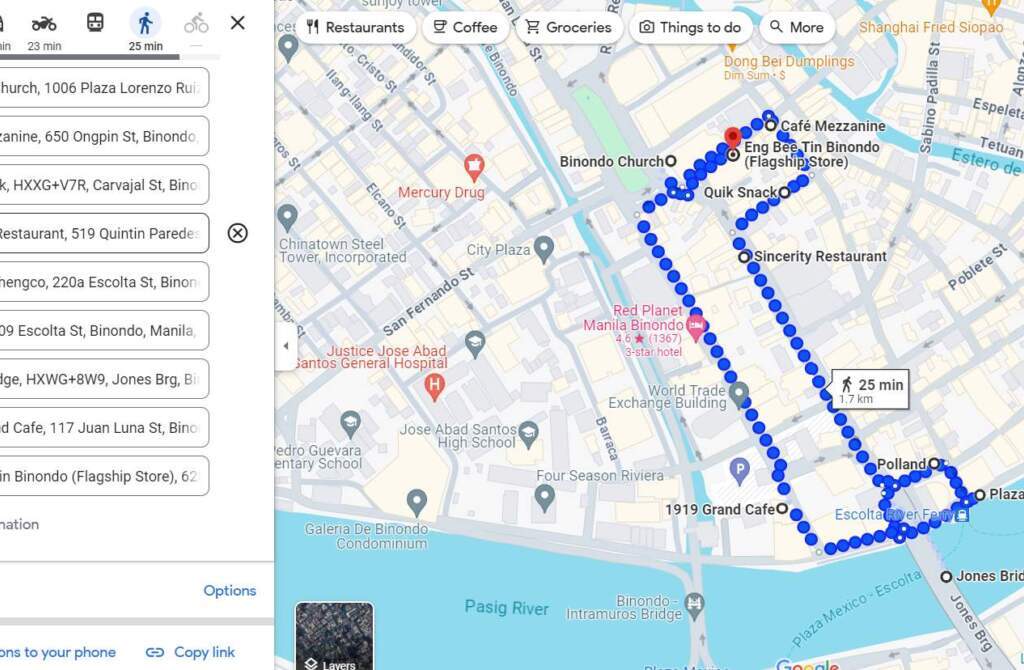
Start at Binondo Church: Begin your day at the Minor Basilica of St. Lorenzo Ruiz. This 16th-century church architecture is a mix of Spanish Baroque with Chinese influences, reflecting the cultural blend that characterizes Binondo. It is the church home of San Lorenzo Ruiz, son of a Chinese father and a Filipino mother, who trained in the Binondo Church before he was martyred in Japan.
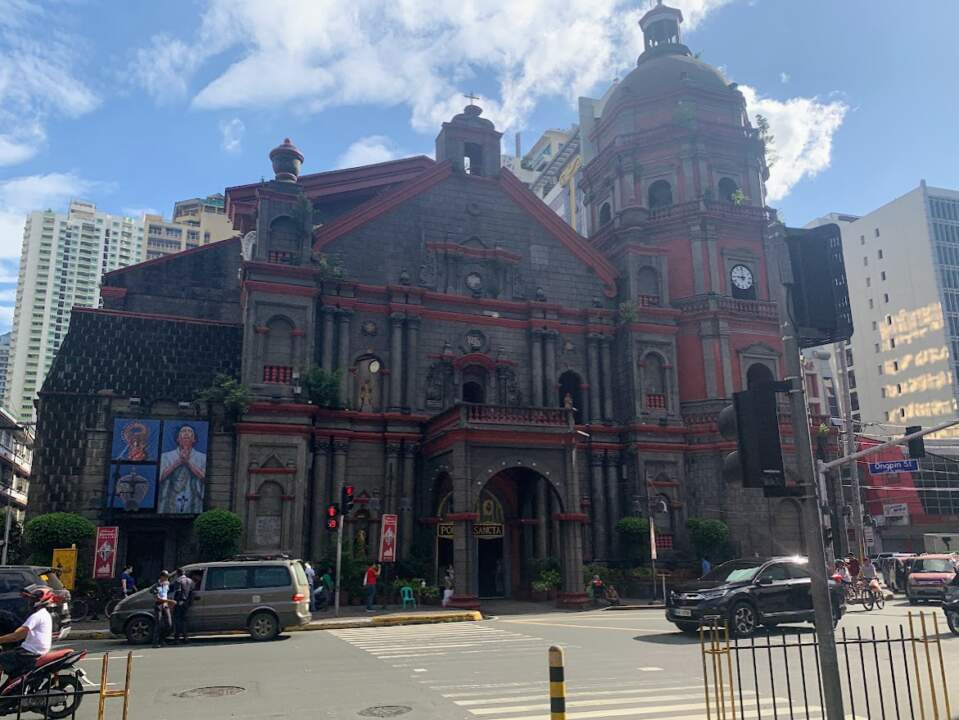
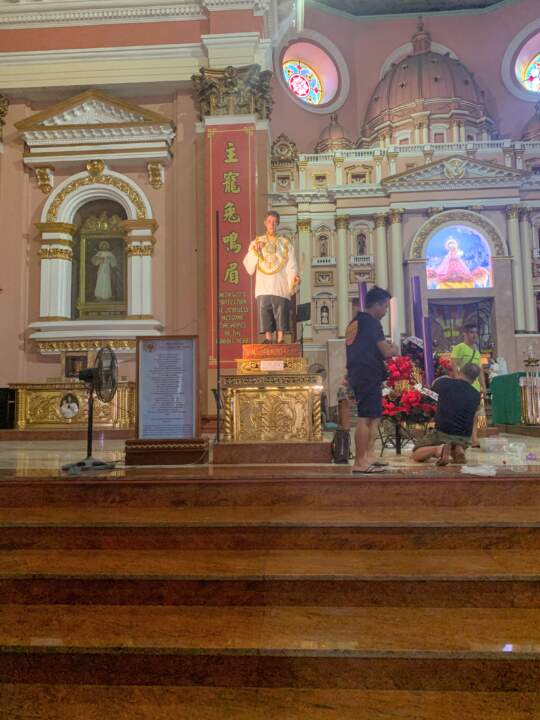

Plaza San Lorenzo Ruiz: The plaza outside the church acts as the gateway to Chinatown’s bustling streets. It’s a great spot for early photos, capturing the morning light bathing the historic structures.
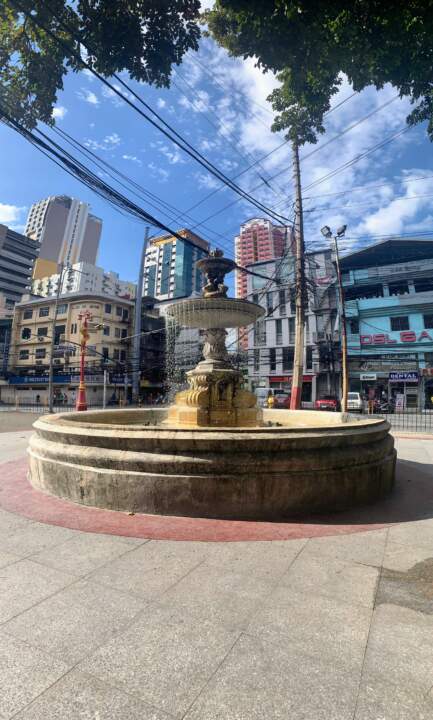
Ongpin Street: Dive into Ongpin Street, the lifeline of Binondo. Here, the sights, sounds, and smells are a mosaic of the local Chinese-Filipino culture. Browse through Chinese herbal stores, jewelry shops, and an array of stores selling everything from traditional medicines to lucky charms. Look at the people as they go around their daily chores.
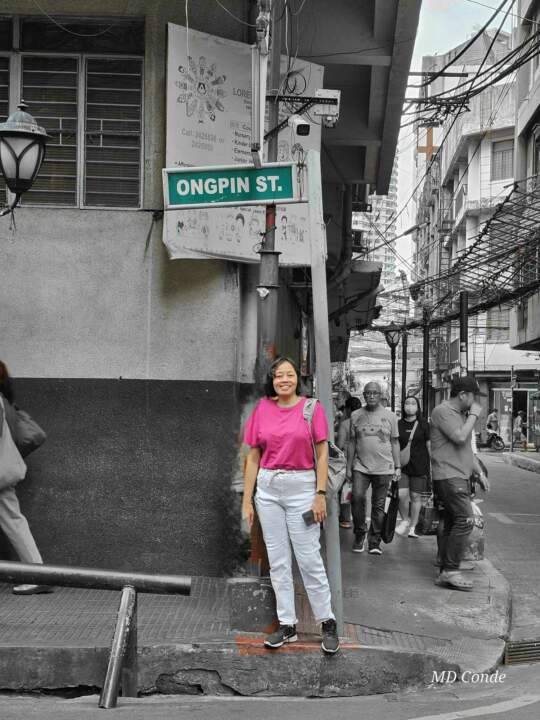

Café Mezzanine: For breakfast, we headed to one of Ongpin’s most famous restaurant -the Cafe Mezzanine, known as the “fireman’s coffee shop,”. It’s not only a place for a caffeine fix but also has great Chinese eats like savory noodles, signature dim sum, and other innovative Chinese dishes. Eating here contributes to a noble cause since all of their earnings go to supporting the local volunteer fire brigade. On the con side, I’ve eaten here twice and the staff is not so friendly. Efficient but not very friendly.
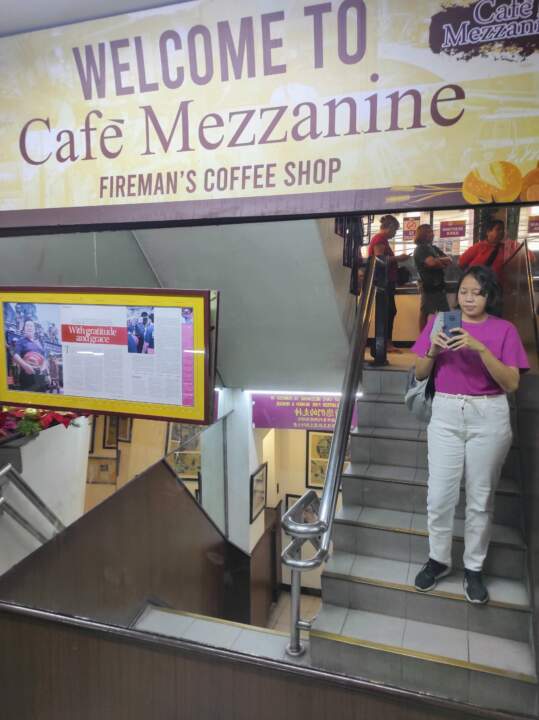

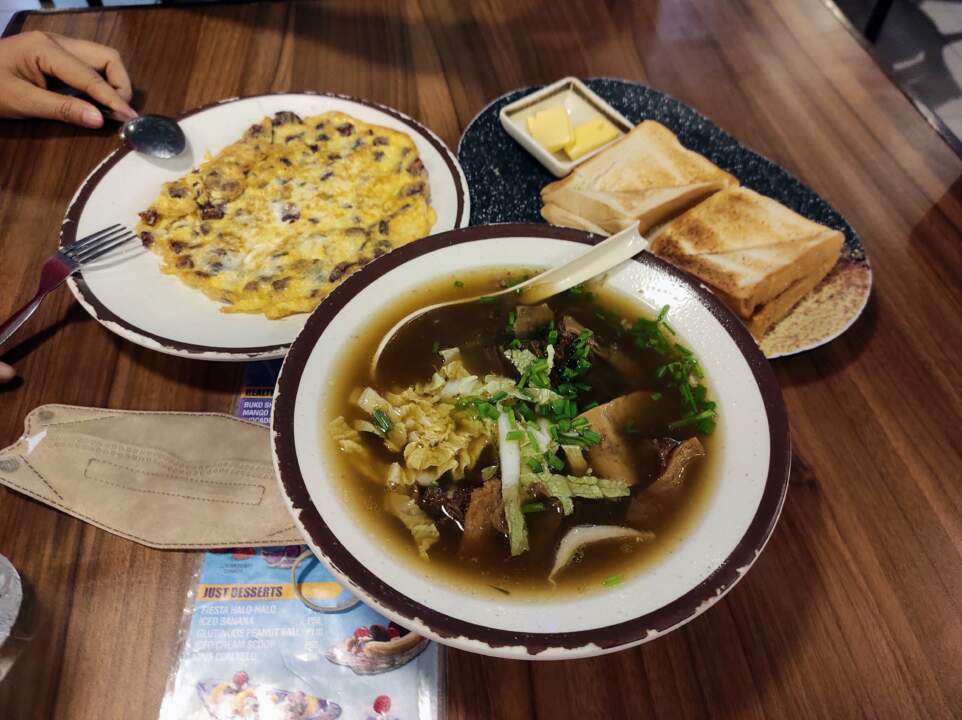
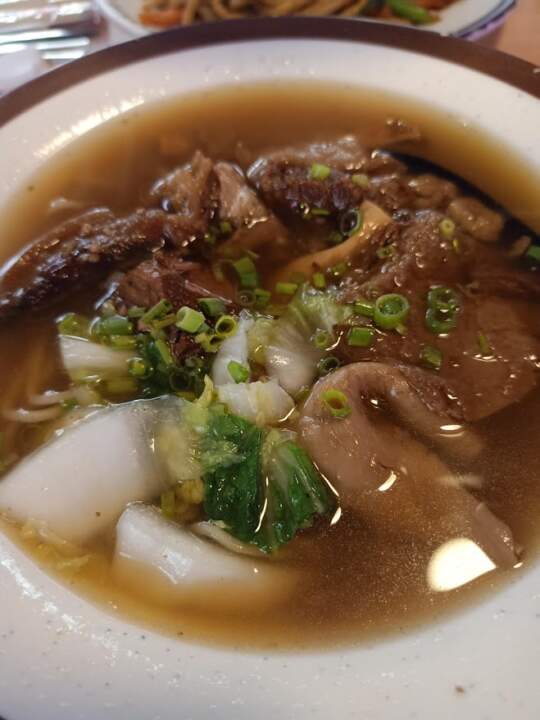
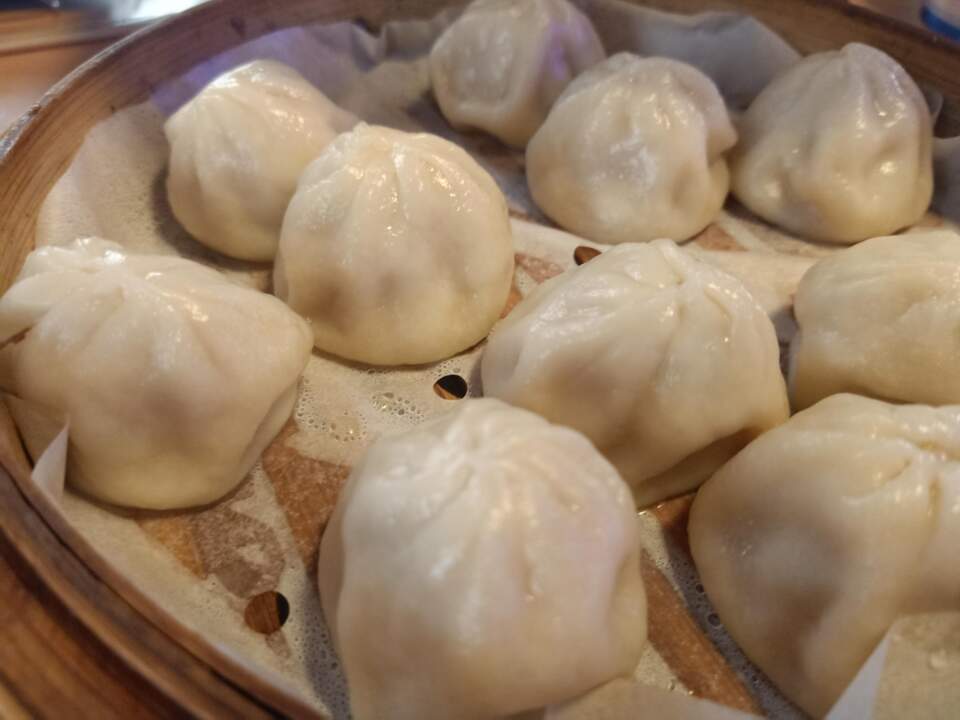
Best Binondo Restaurants Online Reviews -Cafe Mezzanine
Positives:
- Affordable: Many reviewers highlight the cafe’s value for money, with dishes being reasonably priced and offering good portion sizes.
- Authentic Chinese cuisine: Customers enjoy the cafe’s selection of classic Chinese dishes, with favorites like Xiao Long Bao (steamed soup dumplings) and Chinese Yakisoba Kungpao Chicken Noodle being frequently mentioned.
- Must-try desserts: The Lava Pao, a dessert bun filled with salted egg and custard, is a popular recommendation for its unique and delicious flavor combination.
Mixed opinions:
- Xiao Long Bao: While some reviewers praise the dumplings, others found the wrapper to be thick and chewy and the soup filling lacking.
- Service and ambiance: Some reviews mention areas for improvement regarding service speed and the cafe’s overall ambiance, which is described as simple and casual.
Here are some resources where you can find more reviews and detailed feedback from customers:
- Tripadvisor: https://www.tripadvisor.com/Restaurant_Review-g298573-d3836076-Reviews-Cafe_Mezzanine-Manila_Metro_Manila_Luzon.html
- Facebook Page: https://www.facebook.com/CafeMezzanine/
Ho-Land Hopia: A trip to Binondo is incomplete without a visit to this famous store, known for its ube hopia. Rival only to to Eng Bee Tin, it has become synonymous with Chinese-Filipino confectionery, offering a variety of flavors. This is at Yuchengco St, very near Quik Snack. We just dropped in for a quick browse through and apart from Hopia, there were so many interesting ingredients!

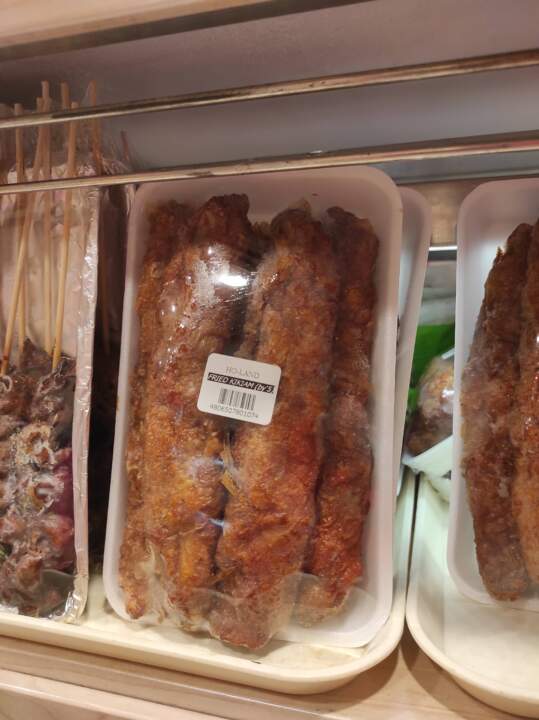

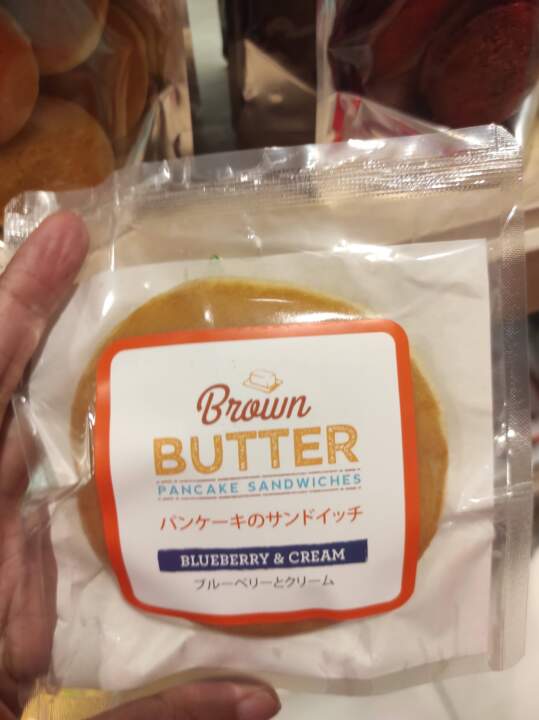
Carvajal Street: This narrow alleyway is a hidden gem for food enthusiasts. It offers an array of street food, fresh fruits, and unique finds. It’s an authentic experience, less frequented by tourists and more by locals. It’s easy to miss so mark it on your maps.

Snack Break at Quik Snack: A culinary treasure, this spot in Carvajal St is renowned for its authentic, freshly made dumplings. It’s an ideal place for a mid-morning snack, offering a taste of traditional Chinese cuisine. Founded in 1967 by Amah Pilar, then already 60 years old, Quik Snack defied expectations. In a time when women rarely ventured into the business world, Amah Pilar, known for her culinary skills, decided to share her passion for cooking with the community. Amah Pilar honed her expertise in vegetarian dishes while serving at Buddhist temples. This unique experience translated into Quik Snack’s menu, offering a variety of vegetarian options alongside classic Hokkien dishes.
The Tofu Cake called Ama Pilar’s Tofu with cilantro and cucumbers was especially interesting because its crunchy on the outside and soft inside..The sweetened soy sauce rounds off the plate. I’m not really a fan of tofu but this one is good.
The Sate Beef Mi -something like Pancit Guisado but different because of the beef flavor and a hint of 5-spice. It was good and flavorful. We also had Kuchay Ah, a kind of empanada filled with pork, muhrooms, tofu, chives, and number of other vegetables.
What really caught my attention was the frozen section were you can buy pre cooked goodies. Was really wanting to buy some but since were walking, I was avoiding to buy too much stuff so my bag won’t be too heavy. We ordered as little as we could since we are still planning to eat a lot but these were already too heavy for the three of us.
Oh, and the owner was really friendly -you can ask her anything about the food and she’ll suggest if you can’t decide. We bumped in Ivan Man Dy’s food tour (of the famous Binondo Walk Tour) here and it was really cool to see people actually joining Binondo food tours!
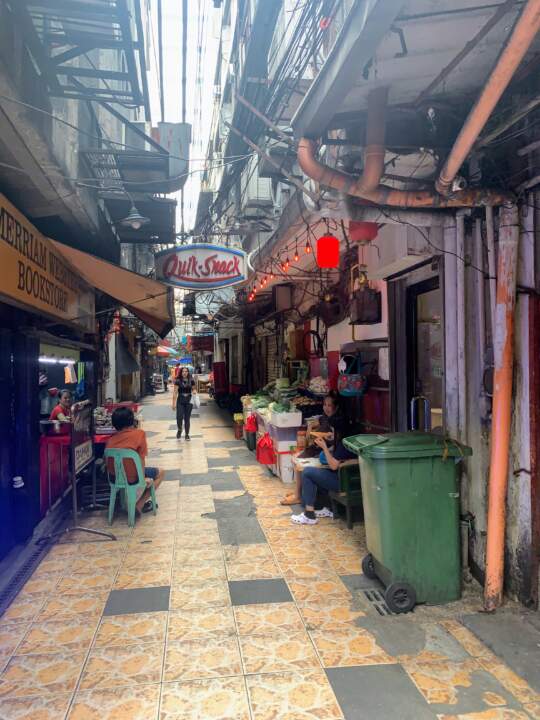
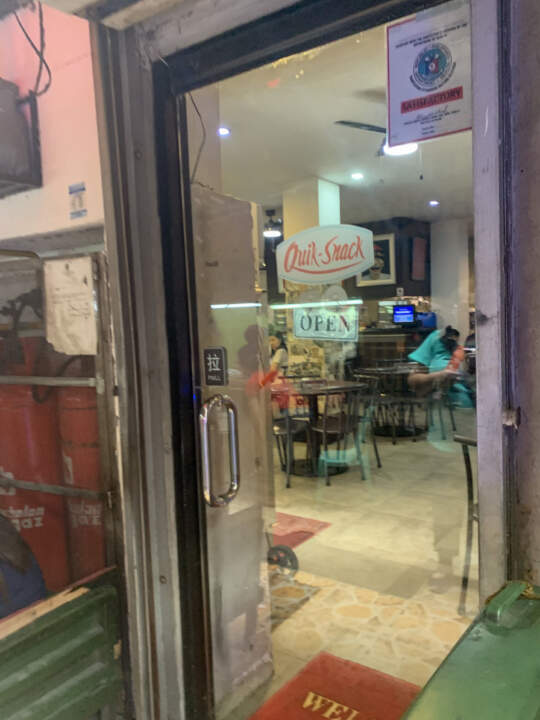
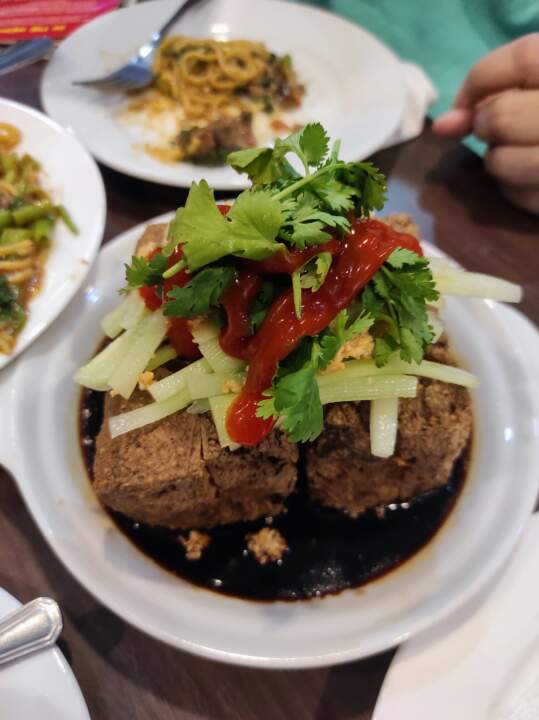
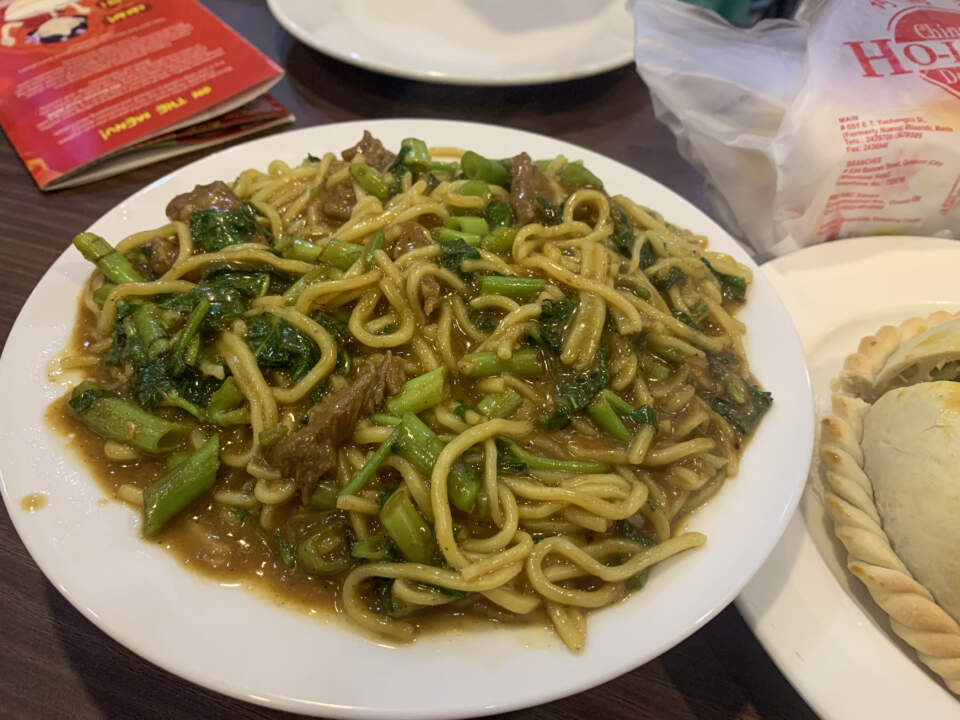
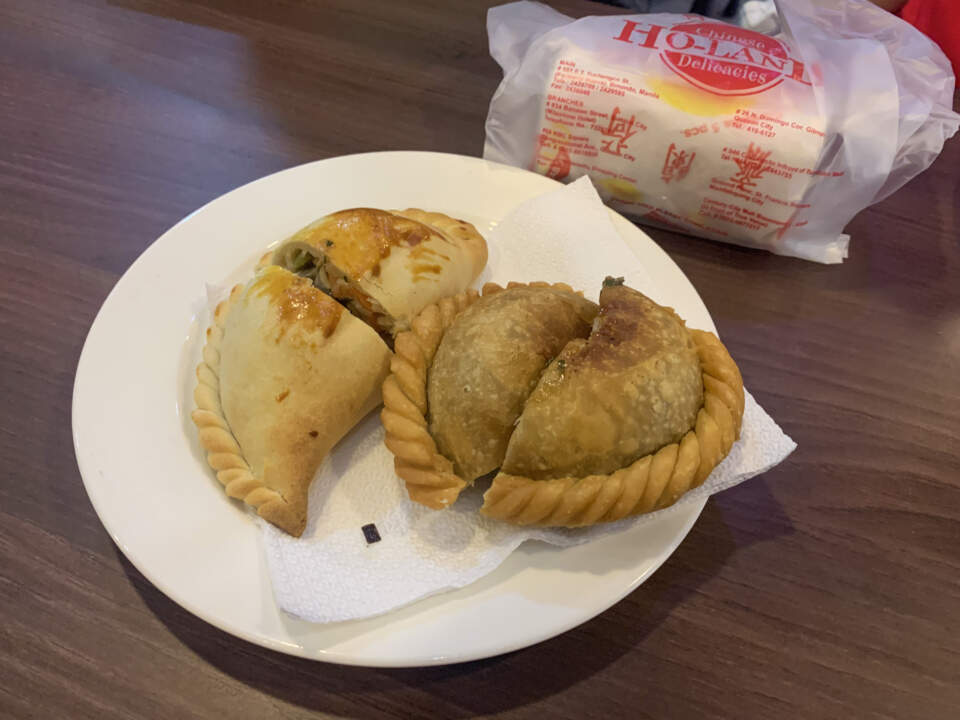
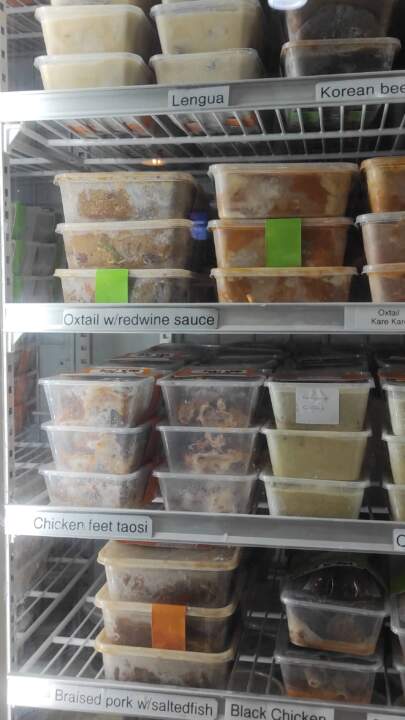

Best Binondo Restaurants Online Reviews -Quik Snack
Positives:
- Home-cooked Tsinoy favorites: Many reviewers commend the restaurant’s authentic Chinese-Filipino (“Tsinoy”) dishes, emphasizing their delicious and comforting flavors. Popular dishes include Sate Beef Mi (fried noodles with beef), Lumpiang Sariwa (fresh spring rolls), and Kuchay-Ah (fried wonton with chive filling).
- Affordable prices: Quik Snack is known for its budget-friendly offerings, making it a popular choice for casual dining.
- Historical charm: Established in 1967, the restaurant holds historical significance in Binondo and adds an element of nostalgia to the dining experience.
Mixed opinions:
- Ambiance and service: While some reviewers find the ambiance simple and casual, others mention it can be crowded and noisy during peak hours. Service speed may also vary depending on the time of your visit.
- Limited menu: Compared to larger restaurants, Quik Snack offers a more concise menu focusing on classic dishes.
Here are some resources where you can find more reviews and detailed feedback from customers:
- Tripadvisor: https://www.tripadvisor.com/Restaurant_Review-g298573-d2076331-Reviews-Quik_Snack_Restaurant-Manila_Metro_Manila_Luzon.html
- Chef Jay’s Kitchen blog: http://www.chefjayskitchen.com/2016/02/quik-snak-tsinoy-favorites-binondo-1967-restaurant-review.html
- YouTube video review: https://m.youtube.com/watch?v=2QaQDQZEyDs
Fo Guang Shan Buddhist Center: After a short walk, we went for a quick visit to this serene Buddhist temple offers a peaceful break. It’s a little non descript and you’ll almost miss it if you werent actually looking for it. Its blended with the old Chinese buildings and stockrooms. It’s an out of ordinary reminder of Binondo’s spiritual heritage and a place for quiet reflection amidst the busy streets.

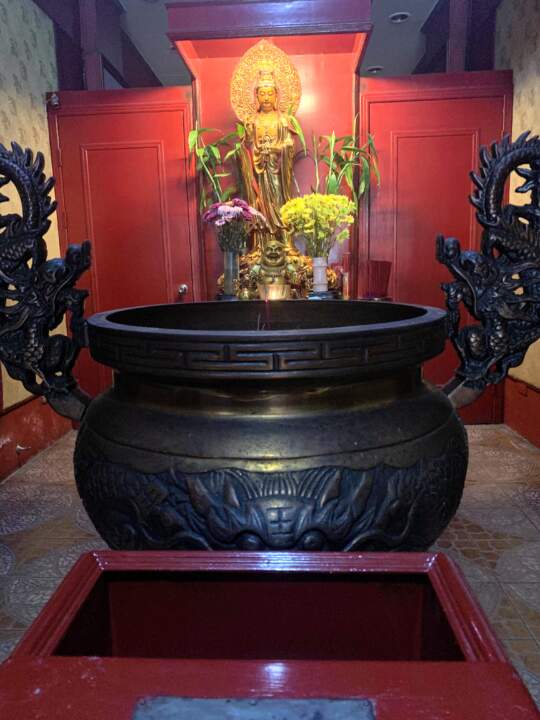
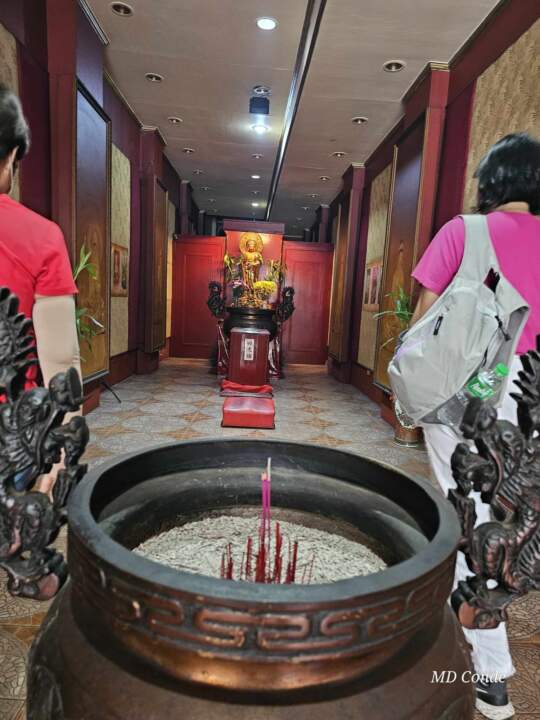
Lunch at Sincerity: It was time for lunch and we’re supposed to have it at Sincerity Cafe. We were all full and since all of us has already eaten at this iconic Binondo restaurant, we decided to skip it. Renowned for its unique offerings like oyster cake, fried chicken, and tofu dishes, Sincerity is a must-visit for a hearty lunch. It’s a place where traditional recipes and genuine flavors take center stage.

Escolta Street: Once the commercial hub of Manila, Escolta has evolved into a blend of the old and the new. Here, historic buildings stand alongside contemporary art spaces and cafes. Feast your eyes on old buildings and lots of small shops to window shop on. It’s a long walk but worth it!

Yuchegnco Plaza – At the end of Escolta St is the Plaza Yuchengco. a redeveloped park project by the Mayor’s Office. Fronting the old Post Office right beside the newly rehabilitated Pasig River, it’s a bit of an old combined with the new. Plaza Yuchengco has a collection of native trees that you can learn new things about. It’s a bit of a long walk but don’t miss this as it has really good views!
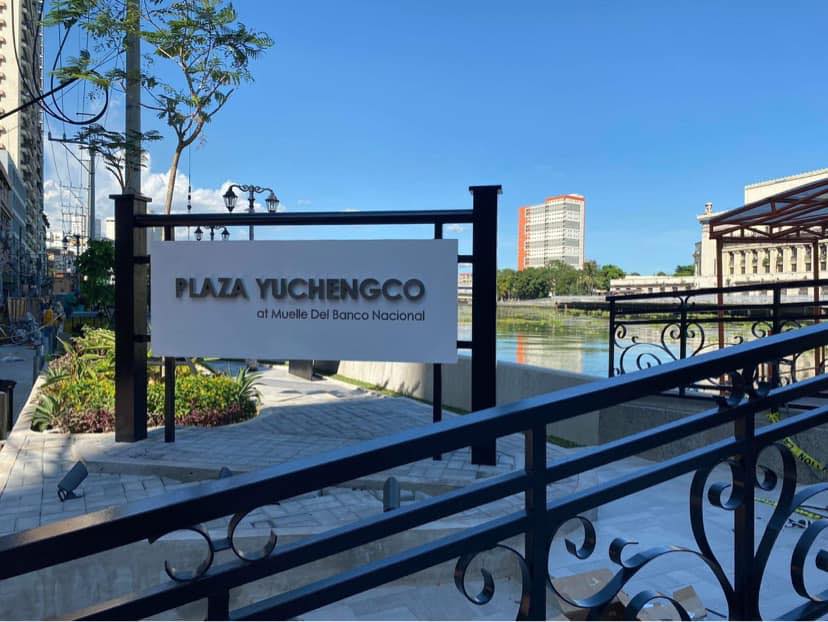
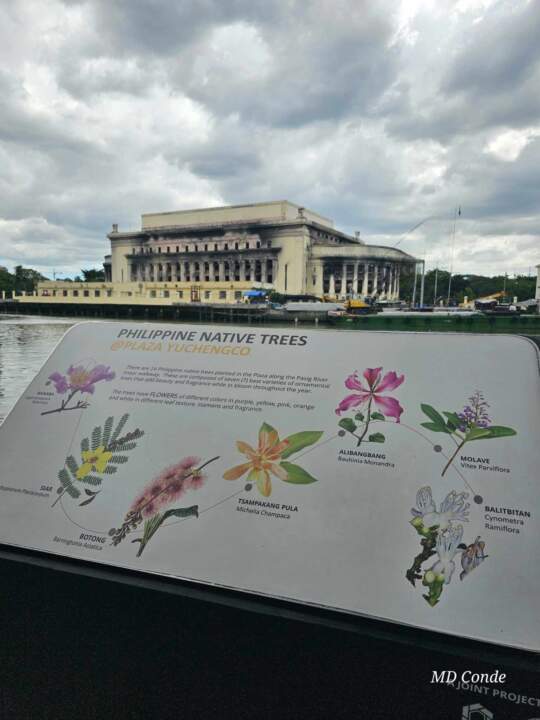
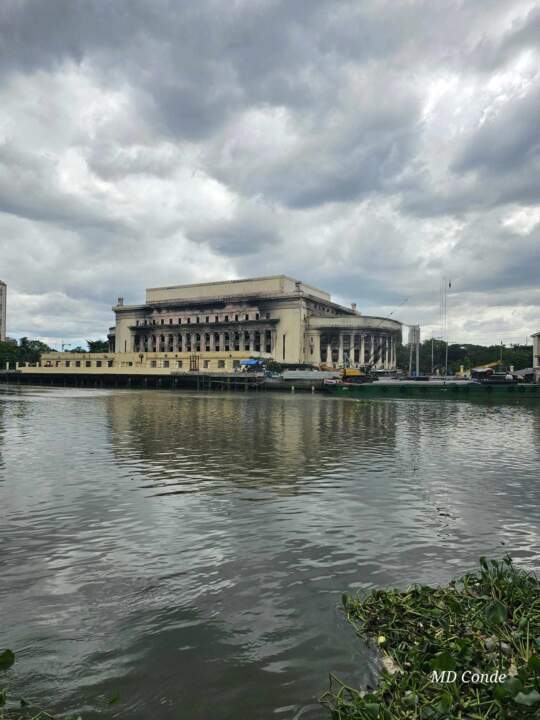
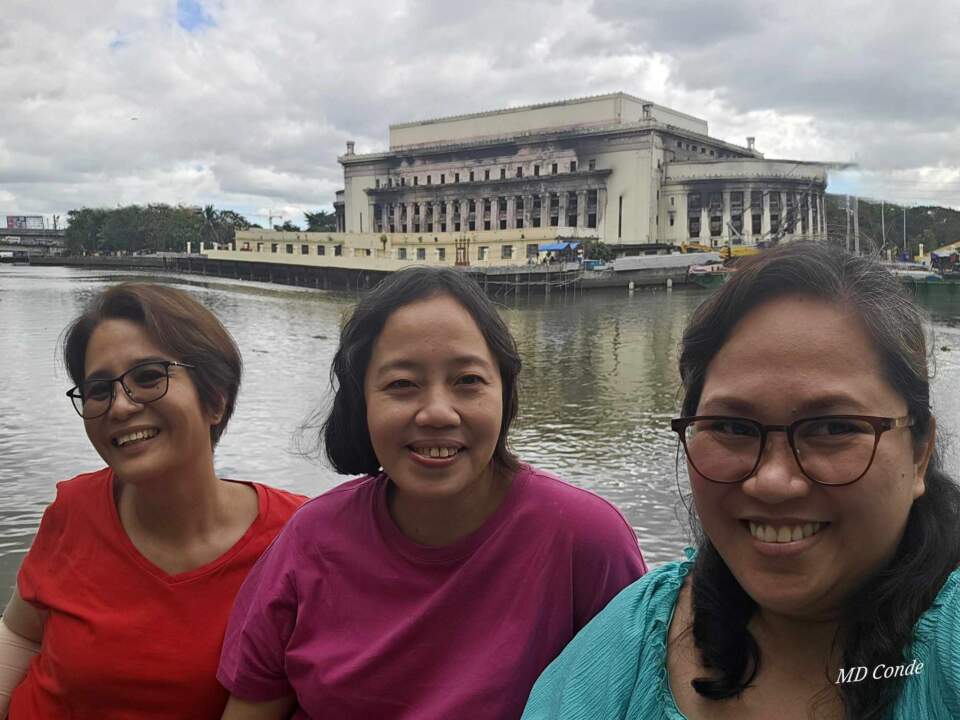
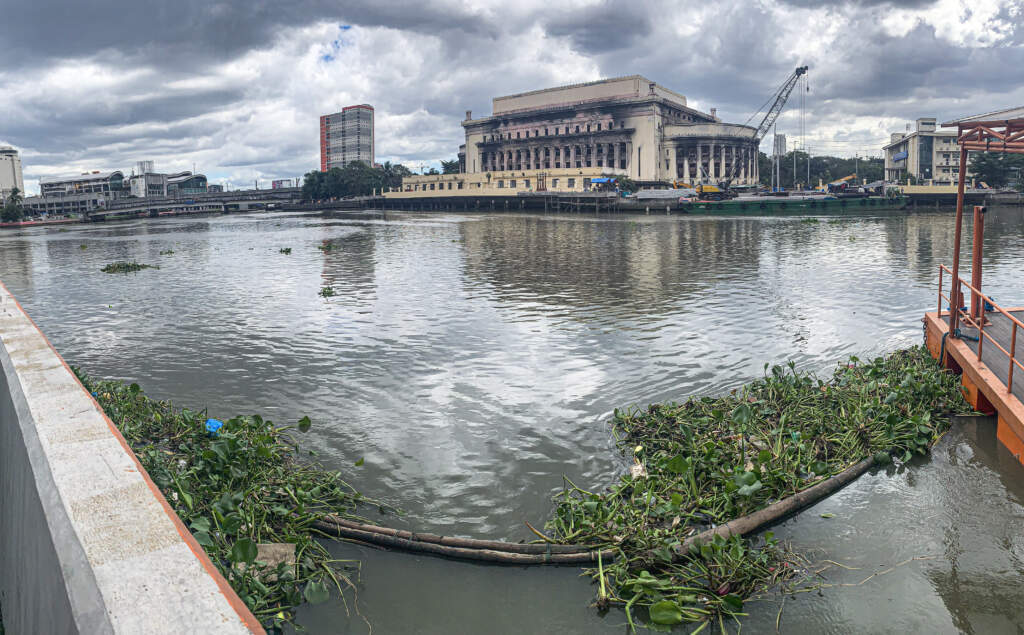
Polland Hopia – Now that we’ve walked off that heavy Quik Snack food, were ready for more! We proceeded to Polland -another Chinese Hopia in the running for the best Hopi along with Eng Bee Tin, Salazar, and Holland. But what we really came here for is not the Hopia but its famous Chinese Lumpia. Chinese Lumpia is a version of our Pinoy Lumpiang Sariwa but with thinly sliced vegetables, tofu, and mushrooms and lots of peanuts. Its filling and fresh!

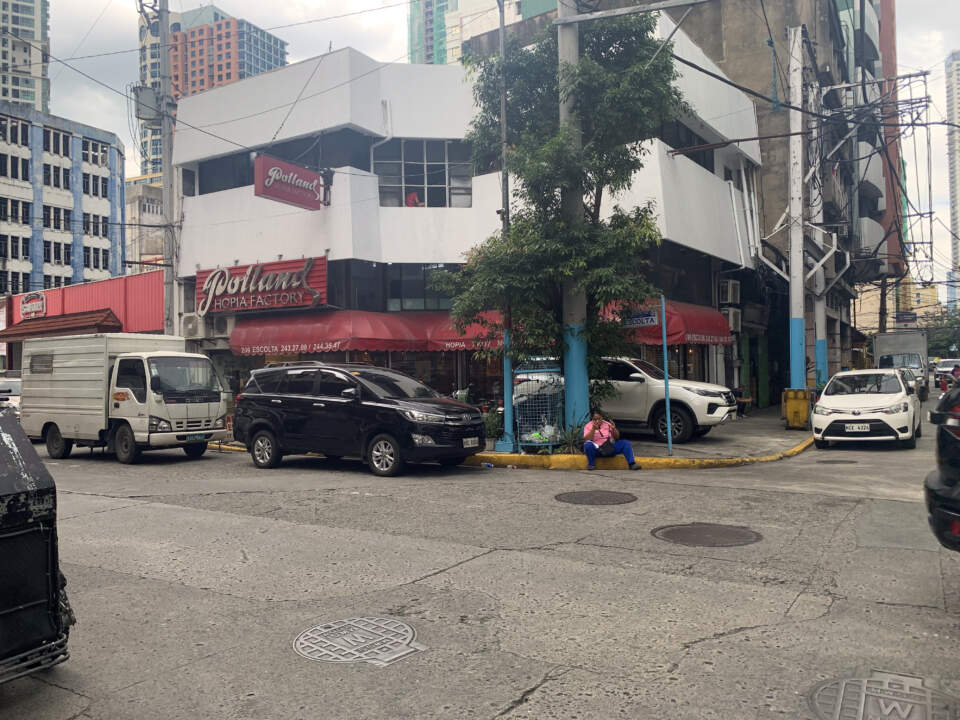
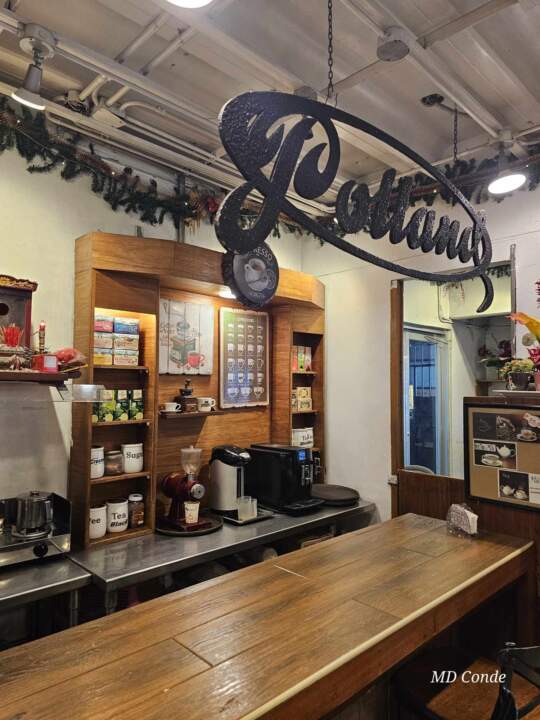
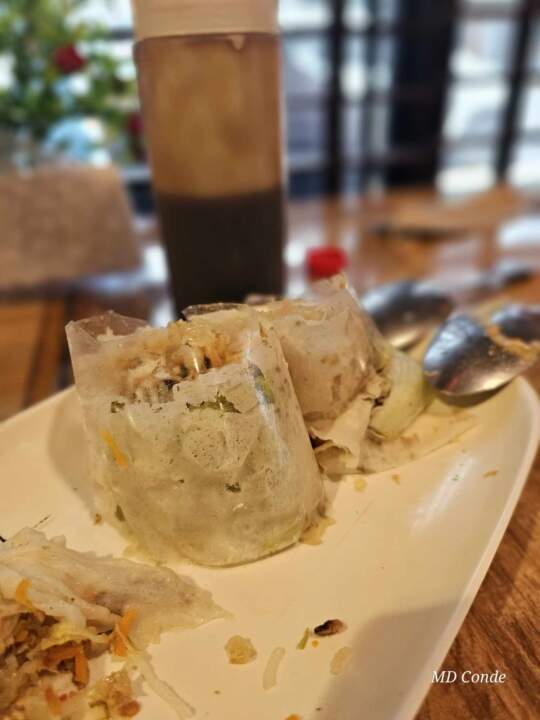
Jones Bridge: After that snack, we went on another leisurely stroll over Jones Bridge, a turn of the centrury bridge constructed by the Americans. At night, the bridge, with its vintage lampposts and view of the Pasig River, presents a picturesque scene, perfect for evening photography. Unfortunately, it was still a bright mid afternoon but we still enjoyed the photoshoots! We passed by the Binondo Filipino Chinese Friendship Arc on the way and I added the photos here!

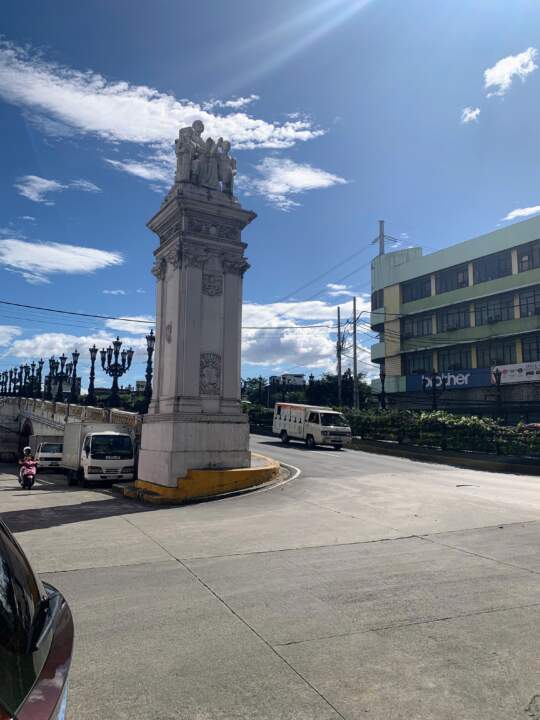
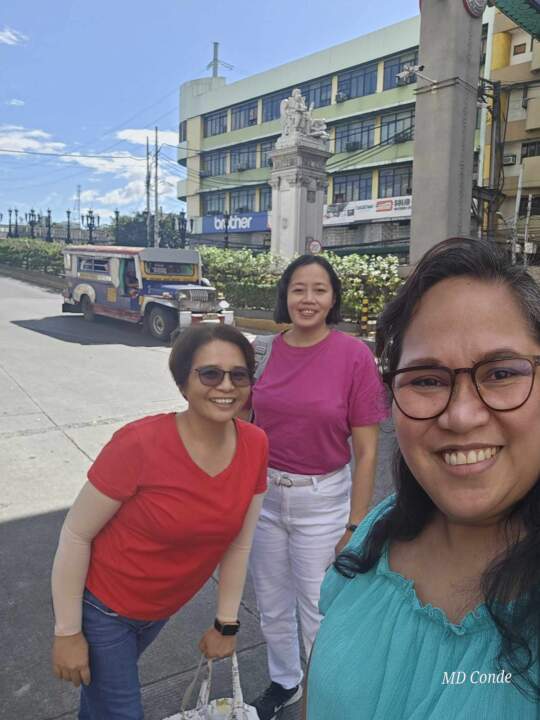
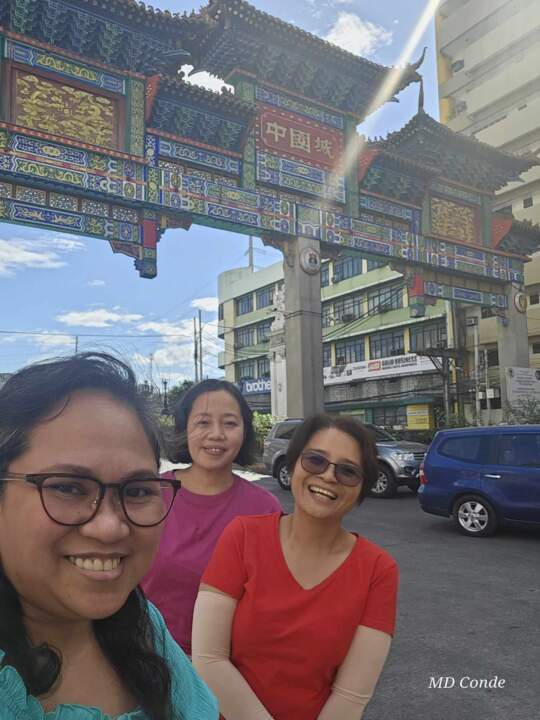
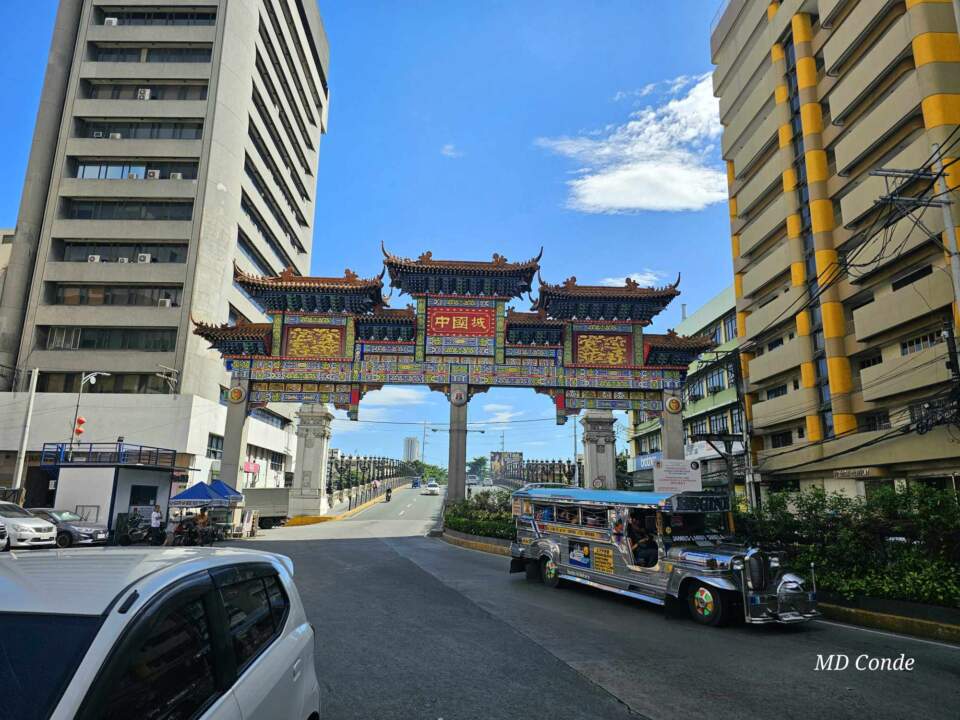
1919 Grand Cafe: A late afternoon visit here for tea and cakes is a delightful way to wind down after a full day tour. The cafe offers a traditional ambiance, perfect for reflecting on the day’s experiences. This building was the former HSBC building at the corner of Juan Luna and Escolta. It’s a 97-year old building built in 1922 and was now renovated into the 1919 Grand Cafe. The cafe had the original facade of the building. It’s surprisingly posh -the kind that lawyers meet in, or meet up with the parents ala Kdramas. The food is not Chinese and we appreciated a little bit of sweets after a long day!

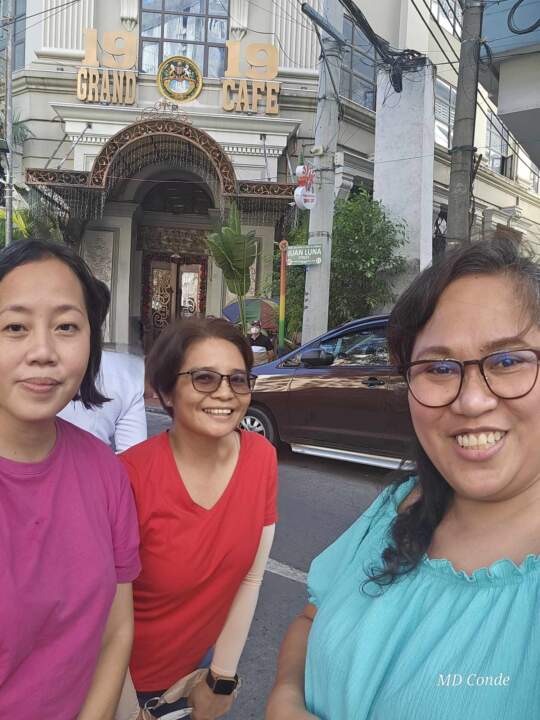
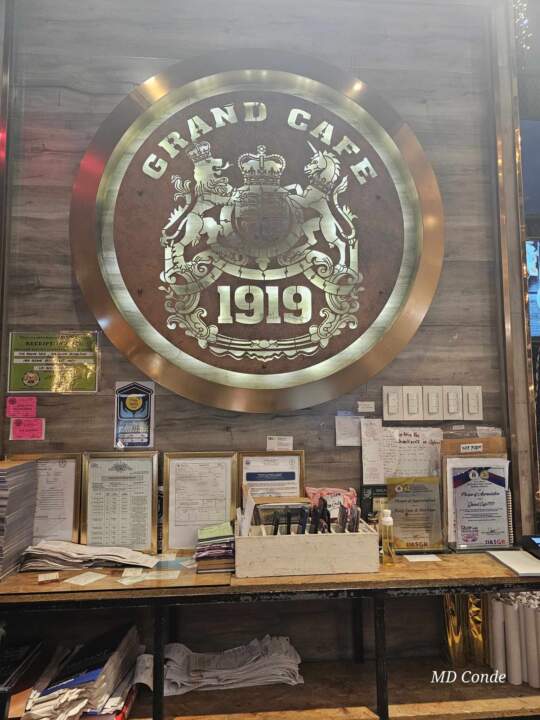
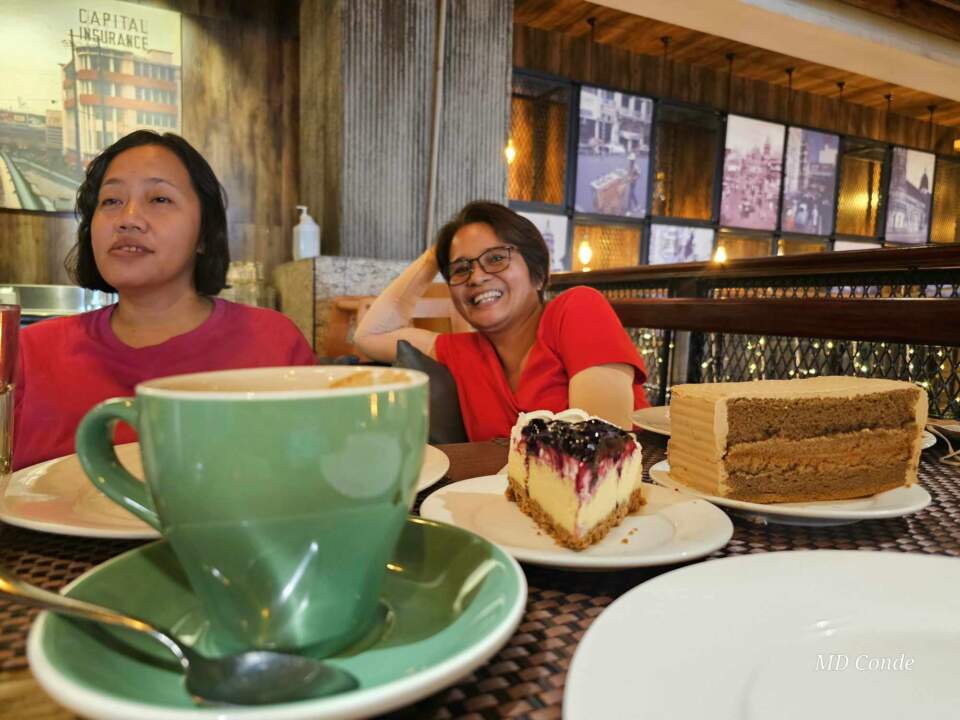
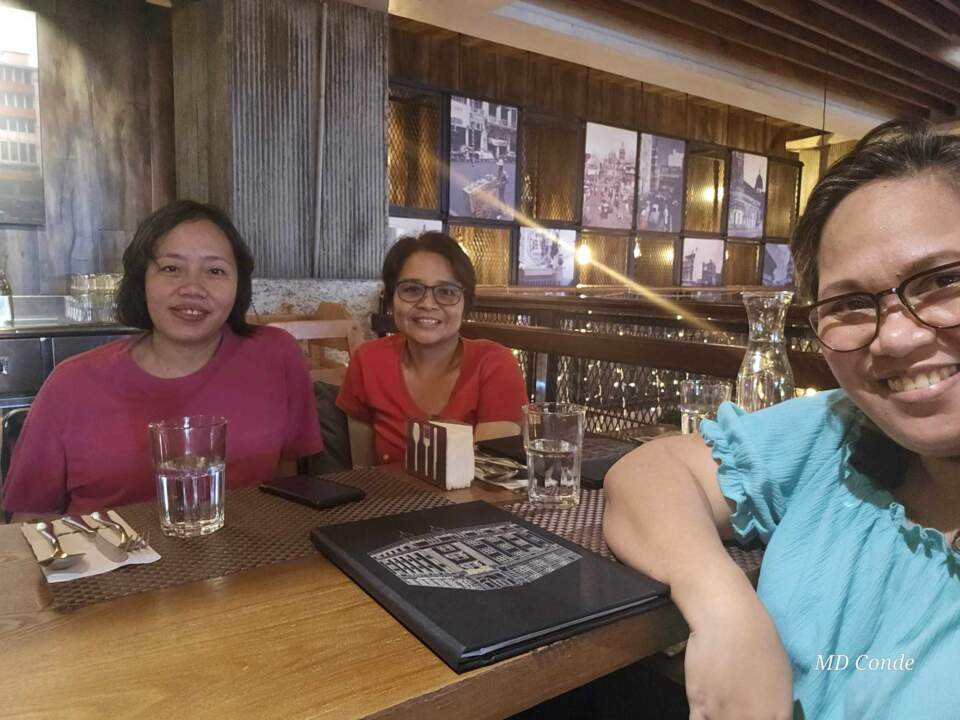
Best Binondo Restaurants Online Reviews -1919 Grand Cafe
Positives:
- Historical ambiance and architecture: Many reviewers mention the cafe’s unique charm and historical vibe, housed in a restored colonial-era building.
- Location: Situated in Binondo, the cafe is convenient for tourists exploring the area’s cultural heritage.
- Dessert and coffee: Some customers enjoy the cafe’s selection of cakes and pastries, complimenting their quality and presentation.
Mixed opinions:
- Food: While some reviewers find the food enjoyable, others report inconsistent quality and consider it overpriced compared to other options. Dishes like pizza and pasta are mentioned as being more positively received, while others like seafood and caldereta received mixed feedback.
- Service: Reviews regarding service vary, with some customers praising the staff’s attentiveness and others mentioning areas for improvement in waiting times and overall efficiency.
Here are some resources where you can find more reviews and detailed information:
- Tripadvisor: https://www.tripadvisor.com/Restaurant_Review-g298573-d15355340-Reviews-Grand_Cafe_1919-Manila_Metro_Manila_Luzon.html
- Instagram: https://www.instagram.com/grandcafe1919/
- YouTube video review: https://www.youtube.com/watch?v=lYwTfjFrCsM
To help you decide if 1919 Grand Cafe is the right fit for you, consider your priorities:
- If you prioritize historical ambiance and cultural experience, the cafe could be a good choice.
- If you’re looking for a wider range of food options and consistent quality at a specific price point, you might consider exploring other restaurants in Binondo.
Eng Bee Tin Flagship Store– Before going home, we need to get some pasalubong so it is most iportant that we end here. We walked back to Ongpin, dropping by the many groceries and bakeries, Shanghai Fried Siopao, sugarcane juice along the corner of Ongpin, tanghulu, etc. By this time, everyone is so tired to take pictures, lol. Still as fun!
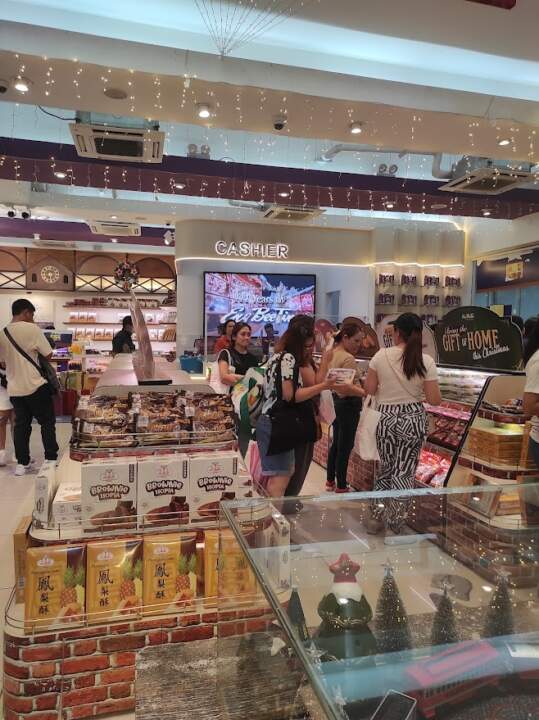
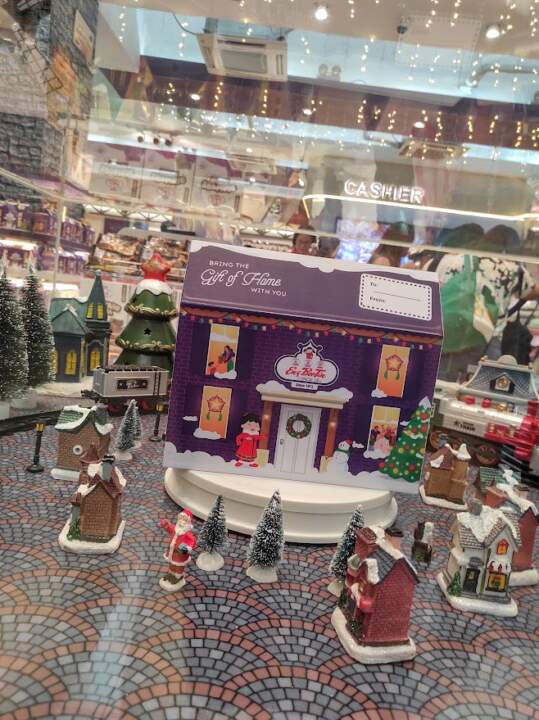
A day spent walking through Binondo for a Binondo Food Tour is really a journey through time, culture, and cuisine. This itinerary guides you through the historical and culinary landmarks of Manila’s Chinatown and also offers an immersive walking experience into the heart and soul of this unique district.
There are a lot of stops we werent able to cover such as Dong Bei, Sincerity, Ying Ying Tea House, Masuki, and Salido Restaurant. The girlfriends are already planning the next Binondo Food Crawl, so hopefully it gets scheduled soon!
How To Get To Binondo
By LRT-1:
- Take the LRT-1 from any station and get off at Carriedo station. The fare is around ₱30 depending on the distance traveled.
- From Carriedo station, you can walk to Binondo in about 13 minutes.
By Jeep:
- Take a bus going to Divisoria or Claro M. Recto. Many jeepneys from the LRT line pass through Binondo, so you can just ask the driver or conductor if they will pass by your destination. The fare is usually around ₱15-₱22.
- Get off near your destination in Binondo.
By Taxi:
- Taxis are readily available in Manila. Just flag one down and tell the driver that you’re going to Binondo. The fare will depend on the traffic, but it’s usually around ₱80-₱95.
By Pasig Ferry:
- Take the Pasig River Ferry from any station and get off at Escolta station. The fare is around ₱25.
- From Escolta station, you can walk to Binondo in about 10 minutes.
Here are some additional tips:
- If you’re not familiar with the area, it’s best to ask for directions from the locals.
- Be aware of your surroundings and take precautions against petty theft.
- If you’re taking the bus, make sure to have the exact fare ready as most jeepneys don’t give change.
A few reminders and guidelines for a successful Binondo Food Tour!
1. Planning Your Culinary Quest:
Map Out Your Food Stops: Begin with the end in mind. Research and list down the must-try spots. From the infamous Cafe Mezzanine’s Mami noodles to Dong Bei’s dumplings, plotting your course will save you from wandering aimlessly and wasting precious eating time.
Timing is Everything: Aim for off-peak hours. Early birds catch the…tastiest siopao. Late mornings or early afternoons on weekdays can help you avoid the lunch rush.
2. Navigating Binondo with Kids:
Safety in Numbers: Binondo can be bustling. A portable child leash or a brightly colored cap for your little ones can keep them close and visible.
Snack Packs: Pack water. While water is easy enough to buy, having something on hand for immediate thirst is a lifesaver.
3. Embracing the Adventure:
Try Something New: Encourage your family to step out of their comfort zone. Whether it’s a strange new dish or an unfamiliar dessert, make it a game. Who knows? You might just discover your next family favorite.
Capture the Moment: Binondo is a feast for the senses and the camera. Snap away, but remember to live in the moment too.
4. Health and Comfort:
Dress for Success: Comfortable clothing and shoes are a must. You’ll be on your feet a lot, navigating through crowded alleys and standing in line for that oh-so-worth-it street food.
Stay Hydrated: Manila’s heat is no joke. Keep water bottles handy to stay hydrated as you explore.
Bathroom Breaks: Know where the clean restrooms are. Some restaurants allow use of their facilities for customers, so plan accordingly.
Parking: If you’re planning to bring your car, there is no chance of you parking nearby. Look up malls and parking areas where you can leave your car and valuables.
5. Respect the Culture:
Cash is King: Many vendors in Binondo operate on a cash-only basis. Withdraw enough cash beforehand to avoid looking for ATMs in a pinch.
Mind Your Manners: Be patient and polite. A smile and a simple “thank you” in Filipino or even in Hokkien can go a long way in showing respect for the local culture and its people.
Dress appropriately : If you’re planning to go inside temples and churches, do not go in sleeveless shirts and shorts, or any other skimpy outfit.
As you wander through its streets, you realize that Binondo is more than a destination; it’s a narrative of resilience, cultural fusion, and gastronomic excellence. Whether you’re a history enthusiast, a cultural explorer, or a food lover, Binondo welcomes you with open arms and a multitude of stories waiting to be discovered. In this historic district, every step is a step back in time, every bite a taste of tradition, and every moment an opportunity to embrace the rich tapestry of Filipino-Chinese heritage.
(“Did you know?” tidbits taken from Tony Donato’s post in Facebook!)

